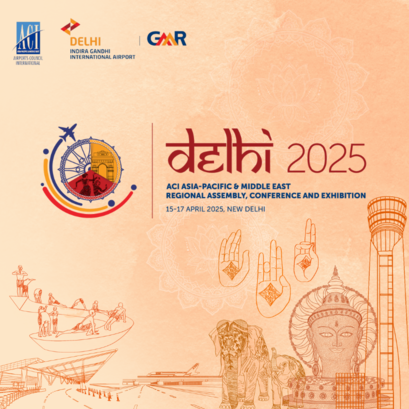
Global Carbon Standard Launches Its New Pinnacle at COP28, Certifying Airports for Achieving Net Zero Carbon Balance
- 2023-12-06

Ten frontrunner airports certified at the new Level 5 of the Airport Carbon Accreditation programme, having achieved net zero for emissions under their control and affirmed a strategic commitment to achieve decarbonisation across all scopes by 2050
Airports Council International launched the new topmost level of achievement in its global Airport Carbon Accreditation programme today at the 28th United Nations Climate Change conference (COP28). This milestone confirms the determination and readiness of the airport industry to deliver on its ambitious climate commitments and contribute to the decarbonisation of aviation - fully aligning with the goals outlined in the Paris Agreement.
Introducing Level 5
At the ATAG1 Global Sustainable Aviation Forum taking place at COP28, Olivier Jankovec, Director General of ACI EUROPE, unveiled the programme’s latest and most ambitious yet development: a new accreditation level - Level 5 - certifying airports for:
- Reaching and maintaining a net zero carbon balance for emissions under their control (Scope 1 and 2), and
- Extending mapping, influencing and reporting requirements for all other emissions (Scope 3).
The introduction of Level 5 builds on the trajectory of evolution set by the introduction of Levels 4 and 4+ in 2020. These earlier levels already certify airports for following a CO2 emissions reduction pathway aligned with the objective of the Paris Agreement to limit global warming by 1.5°C/2°C.
Level 5 thus recognises the ultimate achievement and maturity in airport carbon management, based on the following requirements:
- Extensive carbon reduction in absolute terms: To achieve Level 5, airports need to reach and maintain ≥ 90% absolute CO2 emissions reductions in Scope 1 and 2 in alignment with the ISO Net Zero Guidelines2 and commit to achieving net zero in Scope 3 by 2050 or sooner.
- Investment in carbon removal: Any residual emissions need to be removed from the atmosphere through investment in credible carbon removal projects. To guide airports in this endeavour, ACI has analysed the carbon removal options available and outlined the most effective removal strategies in the updated edition of the Airport Carbon Accreditation Offset Guidance Document3.
- Establishment of a Carbon Management Plan: Level 5 accredited airports need to outline detailed steps to achieve their emissions reduction targets, as part of their Carbon Management Plan.
- Extended carbon footprint: Airports need to submit a verified carbon footprint for Scope 1 and 2 (direct and indirect emissions under the airport’s control) and all relevant categories of Scope 3 (indirect emissions outside of the airport’s control) as per the requirements of the GHG Protocol Scope 3 Guidance, notably covering all significant upstream and downstream activities from third parties - including airlines. Following successful accreditation, Level 5 airports will need to submit their verified carbon footprint calculations annually.
- Establishment of a Stakeholder Partnership Plan: Underpinning airports’ commitment to net zero in Scope 3, Level 5 accreditation requires the setup of a Stakeholder Partnership Plan, engaging with the entire airport ecosystem at a much deeper level, and actively driving third parties towards delivering emissions reductions themselves. The Plan needs to include regular milestones to gauge progress towards reaching net zero across the airport site.
As has been done since the inception of Airport Carbon Accreditation for all accreditation levels, ACI will keep the requirements of Level 5 under regular review based on the latest science to ensure their continued robustness.
Stefano Baronci, Director General of ACI Asia-Pacific & Middle East, said: “The Airport Carbon Accreditation is the only tool empowering airports in their efforts to reduce their carbon footprint. Several airports in our region have been consistently improving their accreditation levels, marking great strides in carbon management strategies. The latest introduction of ACA Level 5 calls for a greater push towards achieving net zero emissions objectives. This also sets a new standard, motivating airports to adopt extensive measures in their pursuit of achieving net zero emissions.”
“Congratulations to Christchurch International Airport, a pioneer of airport sustainability, for being among the first airports in the world to reach level 5 ACA programme. This achievement not only marks a significant milestone for Christchurch Airport but also sets a benchmark for the entire airport industry in our region and beyond to do more towards the net zero emissions goal before 2050. To support our airport members, ACI APAC & MID will also play its part by assisting airports to develop roadmaps to achieve their net-zero goals. Mr. Stefano Baronci, Director General- ACI Asia-Pacific & Middle East,” Baronci added.
The pioneers of Level 5
At the official COP28 side-event, it was announced that ten airports have already secured Level 5 accreditation as part of the pilot programme that took place in 2023, testing the feasibility and rigorousness of the new framework. The global pioneers who stepped onto the stage to receive their hard-earned certificates included:
- Christchurch Airport in New Zealand, operated by Christchurch International Airport Ltd
Amsterdam Airport Schiphol, Eindhoven and Rotterdam-The Hague airports in the Netherlands, operated by the Royal Schiphol Group
Beja, Madeira and Ponta Delgada airports in Portugal, operated by ANA Aeroportos de Portugal | VINCI Airports
Göteborg Landvetter and Malmö airports in Sweden, operated by Swedavia
- Toulon-Hyères airport in France, operated by VINCI Airports
Conor Barry, Manager Engagement and Climate Action, UNFCCC said: “COP28 is an opportunity for nations to come together and take stock of the progress made globally to reach the ambitious goals of the Paris Agreement. While governments focus on national approaches, there is much to celebrate and commend in the realm of voluntary climate action. I commend airports for their leadership in carbon management, notably by aligning their global carbon standard Airport Carbon Accreditation with the goals set forth by the Paris Agreement, and advancing in step with the rising level of ambition and deeper understanding of the climate science. Achieving the profound transformation needed for sustainable development and global temperature stabilisation requires commitments and participation from all sectors and levels of society. My congratulations go out to all ten pioneers of Level 5 of the Airport Carbon Accreditation standard who are demonstrating leadership to advance immediate climate action.”
Airport Carbon Accreditation is the only institutionally-endorsed, global carbon management certification programme for airports. It independently assesses and recognises the efforts of airports to manage and reduce their carbon emissions through its levels of certification: ‘Mapping’, ‘Reduction’, ‘Optimisation’, ‘Neutrality’, ‘Transformation’, ‘Transition’ and ‘Level 5’.
Through its levels of certification, Airport Carbon Accreditation acknowledges that airports are at different stages in their journey towards comprehensive carbon management. It is a programme for airports of all sizes, extending beyond hubs and regional airports with scheduled passenger traffic, to include general aviation and freight-focused airports.
Find out more on the programme website www.airportcarbonaccreditation.org.
- CATEGORY
- COUNTRY / AREA
- Hong Kong SAR
- AUTHOR
- ACI Asia-Pacific & Middle East







